#pullman railroad
Text
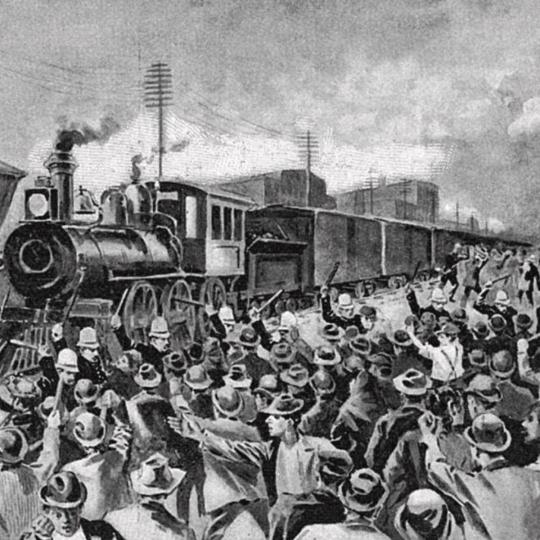
Though workers in many states started throwing Labor Day parades throughout the 1880s, it might never have become a national holiday if not for a historic strike and boycott that started in May 1894, when employees of a railcar manufacturer called Pullman Palace Car Company suffered deep wage cuts. They were joined in a sympathy boycott by the American Railway Union, which had around 150,000 members.
This huge coalition disrupted the nation; the USPS couldn't deliver mail in certain parts of the country. Railway transportation was an essential service, and essential workers were demanding better treatment.
In the midst of this unrest, President Grover Cleveland signed a law making Labor Day an official holiday, which some historians say was a move to make workers less hostile and to calm the waters during a period of continued labor discontent.
On July 4th, Cleveland sent 10,000 federal troops to Chicago to brutally end the strike. Thirteen workers were killed and 53 seriously injured there, with more than 30 killed throughout the nation that summer. The strike ended in failure for the Pullman workers, who won none of their demands.
Railway companies started to hire nonunion workers to restart business. By the time the strike ended, it had cost the railroads millions of dollars in lost revenue and in looted and damaged property. Striking workers had lost more than $1 million in wages.
On July 20, 1894, the strike ended. Less than two weeks later, the Pullman Company reopened their doors, agreeing to rehire the striking workers on one condition — they would sign a pledge to never join a union.
#labor day#love#pullman company#pullman railroad#strikes#president#grover cleveland#transportation#wages#workers#working man#holiday#1800s#september#boycotting#us mail
5 notes
·
View notes
Text
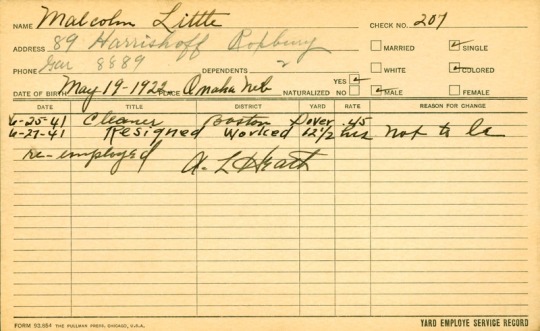
The Pullman Company, which manufactured and operated railroad cars, employed tens of thousands of Black porters from the 1860s to the 1960s. Pullman porters significantly influenced American labor history and the Civil Rights Movement, notably through the creation of the first all-Black union, the Brotherhood of Sleeping Car Porters. They also boast famous alumni, including one who became known under a different name: Malcolm X.
View Malcolm X's Pullman employee card
View all currently digitized Pullman employee cards
#pullman company#pullman porters#chicago#malcolm x#black history#labor rights#civil rights#railroads#newberry library#libraries#special collections#archives#newberryq
30 notes
·
View notes
Video
Pennsylvania Railroad - 12th Street Coach Yard by d.w.davidson
Via Flickr:
View looking north from the Taylor Street bridge depicts the far west end of the PRR 12th Street Coach Yard filled mostly with Pullman sleepers including one from Atlantic Coast Line for the South Wind service. Beyond the coach yard is PRR's Polk Street Freight House (Western Warehousing Co.). The date of the photograph and the photographer are unknown, but the red border Kodachrome dates it to at least 1958.
#prr#pennsylvania railroad#acl#atlantic coast line#pullman#1950s#trains#passenger train#history#chicago#illinois
13 notes
·
View notes
Video
1971 - Belle of the ball by Bingley Hall
Via Flickr:
Unfortunately taken on dubious film stock, this transparency has not weathered the test of time well, but it's rarity value saves it. The 'Brighton Belle' electric Pullman service arrives at London's Victoria station with an up service from Brighton sometime during 1971. Three 5-car 750v DC, third rail, all Pullman electric multiple units were built for the Southern Railway in 1932 and worked the service in either single or double unit formations. It lost its classic umber and cream Pullman livery in 1969 and the service and units were withdrawn in April 1972.
#Transport#train#Transportation#Rail#railway#Railroad#electric#UK#Britain#England#Third rail#750V#DC#EMU#electric multiple unit#Brighton Belle#Pullman#5-BEL#Victoria#Metropolitan Cammell#Class 403#British Rail#BR#passenger#flickr#trainspam
8 notes
·
View notes
Photo

1935 Travel At Reduced Rates To Your Favorite Summer Resort In Pullman Safety & Comfort
Source: www.flickr.com / Halloween HJB
Published at: https://propadv.com/trains-ad-and-poster-collection/pullman-car-company-ad-and-poster-collection/
9 notes
·
View notes
Video
ERIE, Ridgewood, New Jersey, circa 1930s by Center for Railroad Photography & Art
Via Flickr:
Rear view of the "Erie Limited" passenger train stopped at the station at Ridgewood, New Jersey, circa 1930s. Photograph by Donald W. Furler, © 2017, Center for Railroad Photography and Art, Furler-23-016-02
#erie limited#erie#erie railroad#pullman#1930s#new york city#chicago#trains#passenger train#history#ridgewood#new jersey#observation car
6 notes
·
View notes
Photo

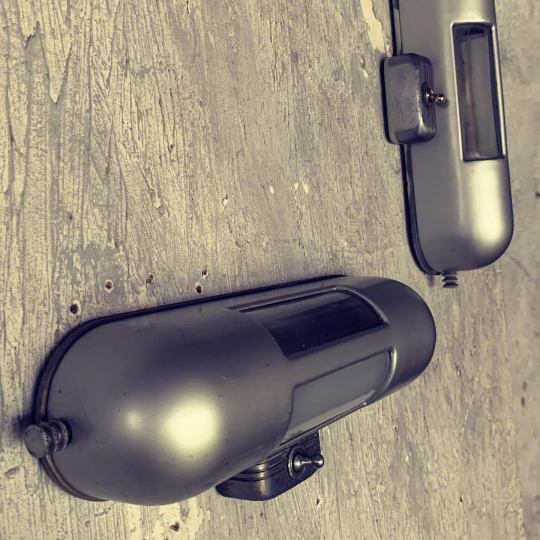
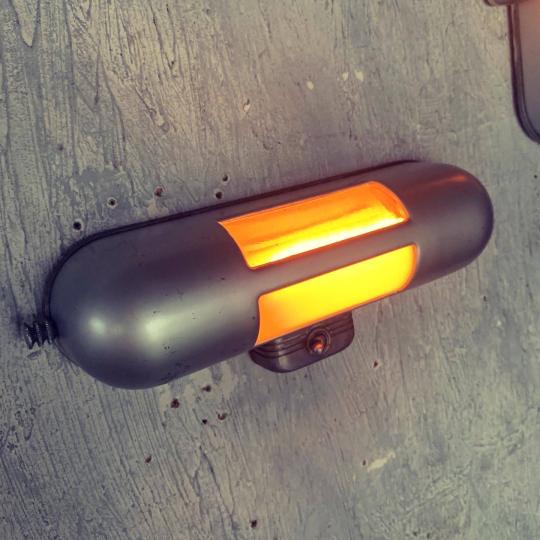

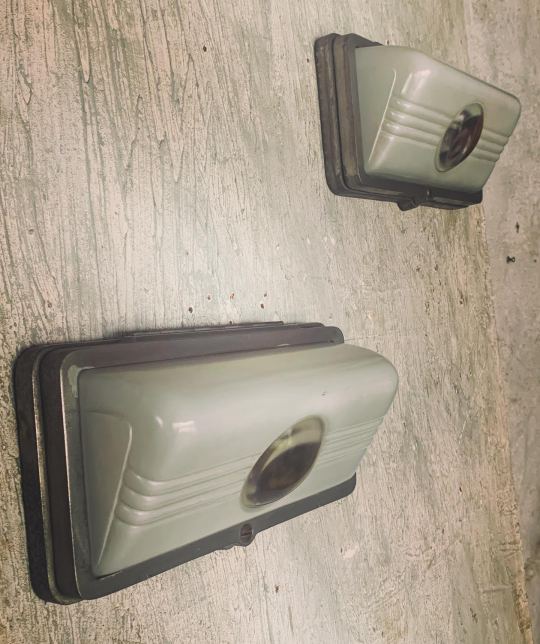


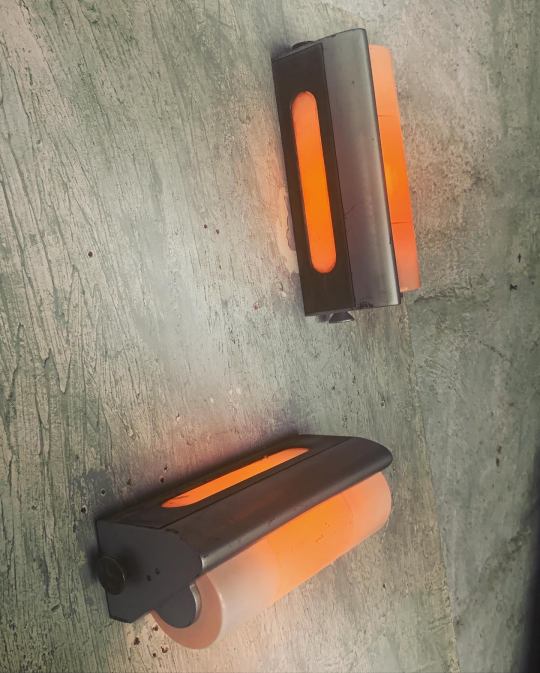


HENRY DREYFUSS
Streamlined aluminum railroad passenger car wall sconces lights created by American industrial designer Henry Dreyfuss (1904-1972) for New York Central's streamlined luxury train, the 20th Century Limited and Pullman cars. Throughout the first half of the 20th century, Dreyfuss was commissioned by American industry to create all manner of functional art. From fountain pens and cameras to appliances and bathroom sinks to trains, airplanes and even 20,000 ton ocean liners for which he integrated form and function from stem to stern inside and out.
His commissions included the interior and exterior design of entire trains for the New York Central Railroad. He was responsible for the design of every rail car, from the sleek, streamlined locomotive all the way to these interior wall lights that lit the nights across America railways.
All made in Aluminum and heavy milkglass, all working , all 3 designs available , each uniquely stunning.
Item No. E 5576
Dimensions: Largest ones in pictures are 10″ x 5″ approx.
List Price: $ 850 per pair.
504.581.3733 / t
#henry dreyfuss#american design#industrial design#streamlined#art deco#lighting#wall sconce#interiors#pullman cars#railroad#lighting design#night ligh#reading light#nola#magazine street#interior decor#interior design
5 notes
·
View notes
Text
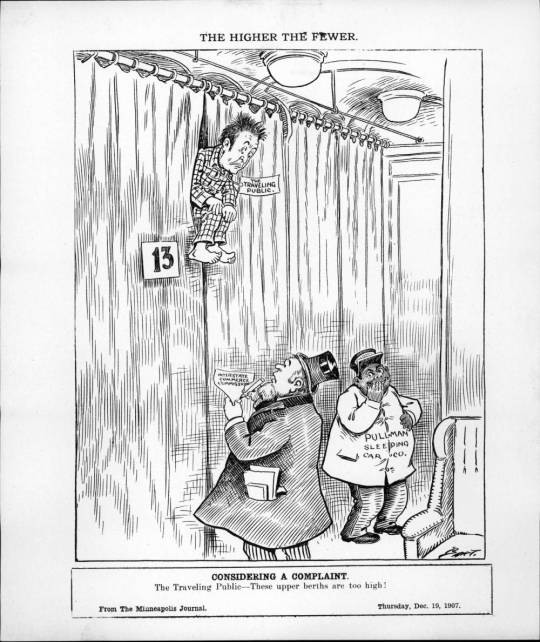
The Higher the Fewer - Considering a Complaint
December 19, 1907
The Traveling Public is seated two stories up in a train car, in bed 13. The Interstate Commerce Commission takes notes while a porter from the Pullman Sleeping Car Co. laughs.
The caption reads "The Traveling Public - These upper berths are too high!"
This refers to the prices of upper berths in sleeping cars, which were the same as the more desirable lower berths, leading to a lawsuit demanding lower prices for the upper berths.
From Hennepin County Library
Original available at: https://digitalcollections.hclib.org/digital/collection/Bart/id/5929/rec/1812
#charles bartholomew#political cartoon#railroads#interstate commerce commission#pullman sleeping car company#american history
0 notes
Text
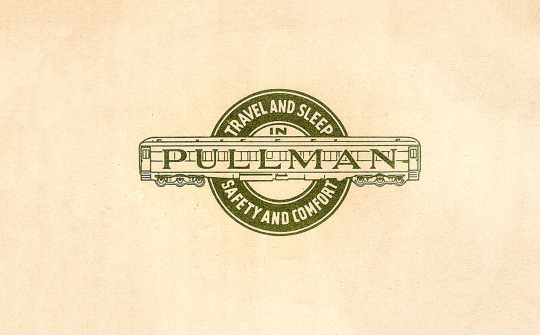
Pullman Company travel brochure - 1949.
0 notes
Text
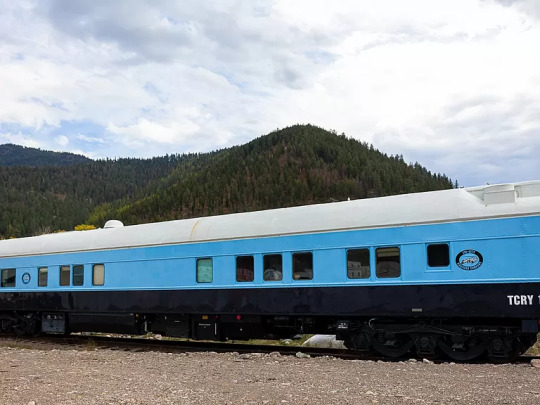
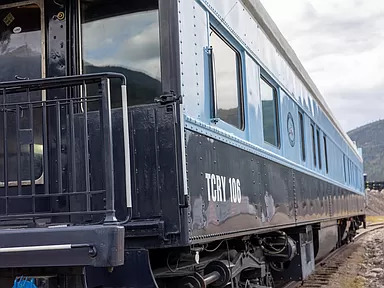
Found another of my former posts that didn't sell. This is a 1925 Pullman railroad car converted to a home. I think that the problem is that it's out in the middle of nowhere and it has to be moved. I have no idea how you would transport it, but the seller is willing to help facilitate the move. Right now the 3bd, 3ba home is in Bonner, MT. It comes furnished and is $249K.
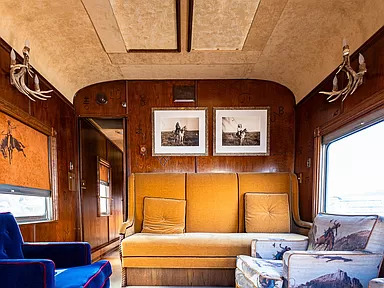
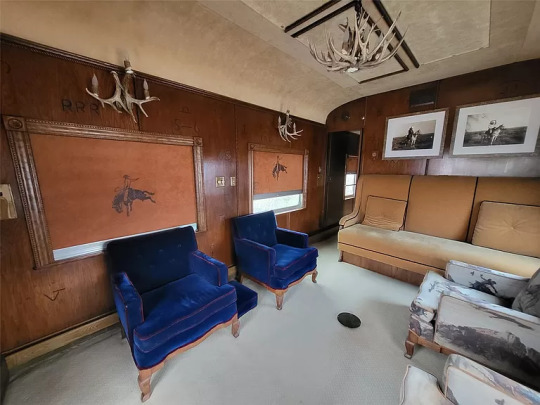
It's got a western theme. The shades have cowboys on bucking broncos, and I love the soft velvet furniture. Look at the chairs w/scenes on the fabric.
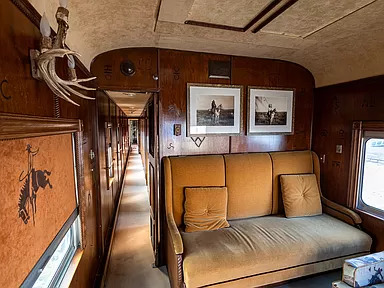
This sofa is an original train seat.

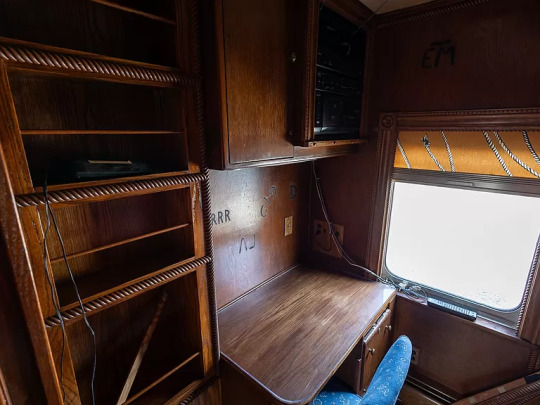
Now, here we have a beautiful desk that looks like it could be original & a chair, plus another vintage bench seat with storage drawers.
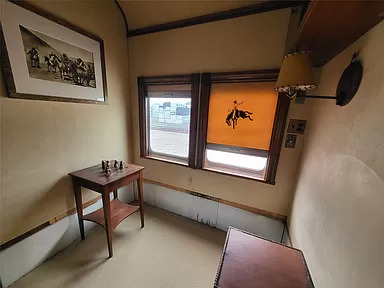
Small room flex space.

Outside this bedroom there's wallpaper and a shower curtain with a barbed wire print.

I like the stainless steel shower (there are 3 of them, one for each bedroom). There's also a very private toilet in each bedroom next to the chest of drawers.

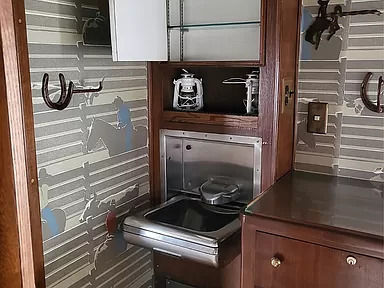
Above the toilet is a clever unit with a mirrored medicine chest and a pull down sink.

Cute room with bunks and vintage cowboy wallpaper.
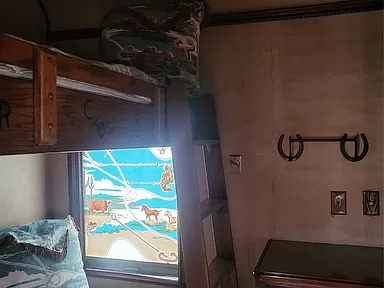
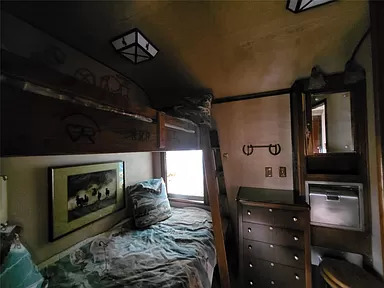
The bedroom toilet units and chest of drawers must be original b/c they're built-in. They probably had bunk beds, but these wouldn't be the originals.
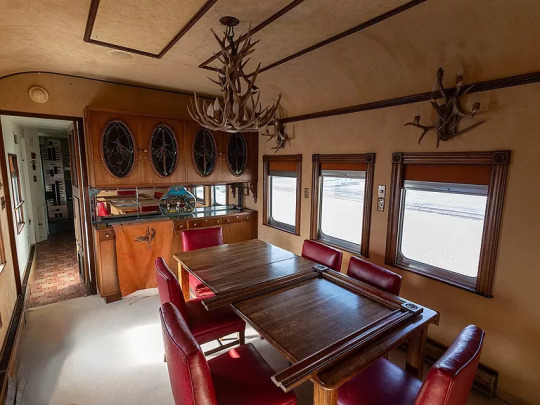
The dining room fits 6 in comfy upholstered chairs.

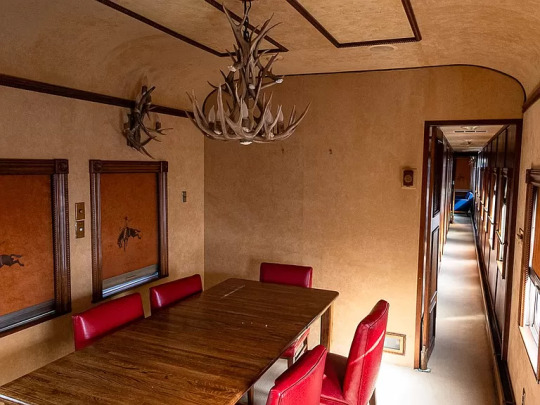
An antler chandelier matches the smaller antler sconces around the home. On the right is the hall to the bedrooms and showers.

A nice built-in serving cabinet has cowboy stained glass to match the window shades.

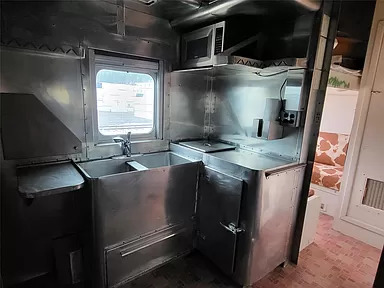
The kitchen also looks original. It's completely stainless steel and commercial. I trust that all of this works
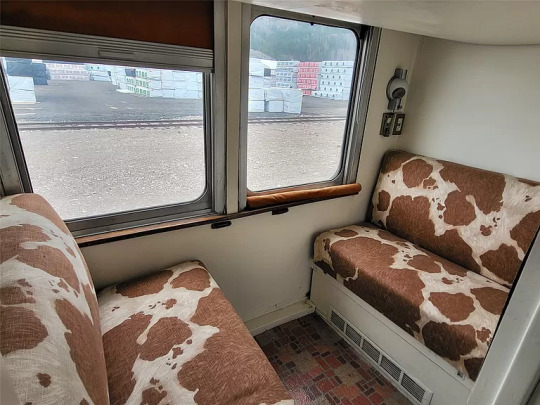
At the end of the car is this cute little original seating area.
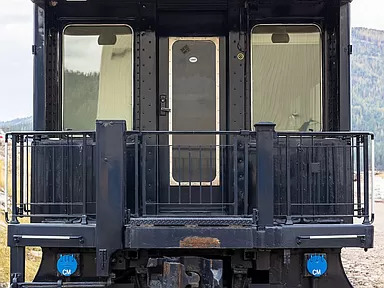
I'm not sure if even a small chair can fit out here, but it sure is cute.
https://www.zillow.com/homedetails/Nhn-Nka-Bonner-MT-59823/2054689249_zpid/
140 notes
·
View notes
Text
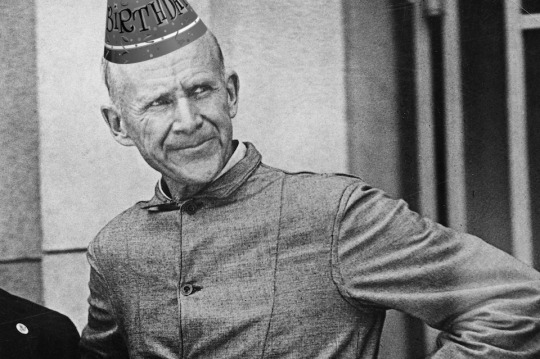
Happy birthday, Eugene Debs! (November 5, 1855)
A highly-influential socialist writer, activist, and politician, as well as a founder of the Industrial Workers of the World, Eugene Debs was born in Terre Haute, Indiana, and was in his younger years a member of the Brotherhood of Locomotive Firemen and an up-and-coming Democratic member of the Indiana House of Representatives. He quit the legislature after a bill to expand workers' rights was gutted, and turned to union organization. He helped to found the American Railway Union, an industrial union of railroad workers, and the union achieved some early success before being crushed in the Pullman Strike, for which Debs was jailed. In prison, Debs read Marx, and emerged a committed socialist and a leading member of the Socialist Party in various of its incarnations. Debs was frequently regarded as the one man who could pull together the party's disparate factions, and was nominated as its candidate for president five times, often against his will. The last of these campaigns, in 1920, was conducted from prison, where Debs had once again been placed after giving a speech condemning the United States' involvement in World War I. Debs' sentence was commuted in 1921 after a large public pressure campaign for his release, but prison time had taken its toll on Debs' health, and he died in 1926.
"Years ago I recognized my kinship with all living beings, and I made up my mind then that I was not one bit better than the meanest on Earth. I said then, and I say now, that while there is a lower class, I am in it; and while there is a criminal element, I am of it; and while there is a soul in prison, I am not free."
168 notes
·
View notes
Text
All Aboard: The Journey of Locomotives in the U.S. 🚂💨💨💨

A train's horn and the rhythmic clatter of wheels on rails are more than just sounds. They are echoes of an era that transformed America. Delving deep into the National Archives Catalog, we unearth treasures that tell the tale of the nation's love affair with locomotives.

The dawn of American rail travel began in the early 19th century. The Baltimore and Ohio Railroad, founded in 1827, marked the nation's entry into the world of rail. Locomotives like the Tom Thumb demonstrated the potential of train travel, even if they occasionally lost races to horse-drawn carriages.
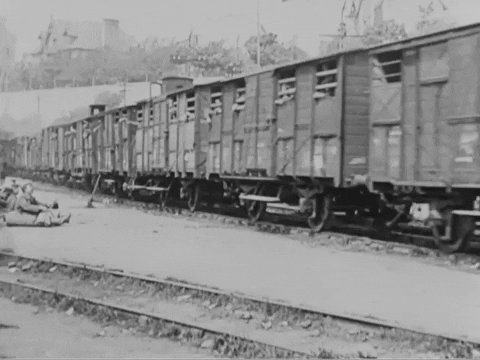
By the 1860s, the monumental task of connecting the East to the West was achieved with the First Transcontinental Railroad. This incredible feat, symbolized by the golden spike at Promontory Summit in Utah, stitched the fabric of the nation together, making cross-country travel faster and more accessible than ever before.
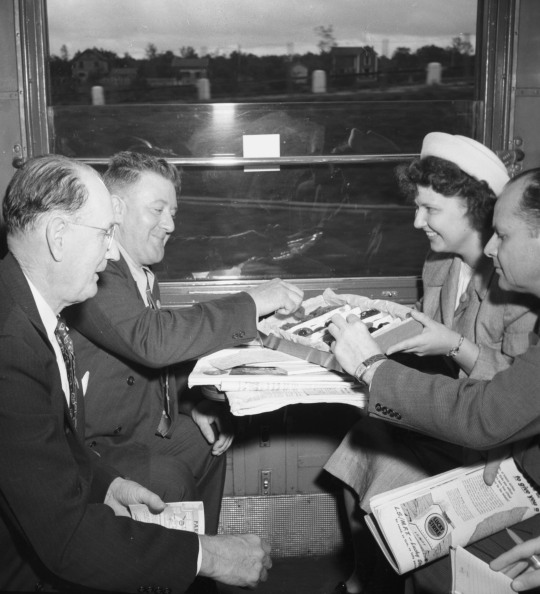
The golden age of railroads ushered in luxurious train journeys. Trains like the Pullman Sleeping Cars offered Americans unprecedented comfort, making long-distance travel not just bearable but enjoyable. Meanwhile, iconic stations like New York's Grand Central Terminal and D.C.'s Union Station became symbols of the grandeur and promise of rail travel.
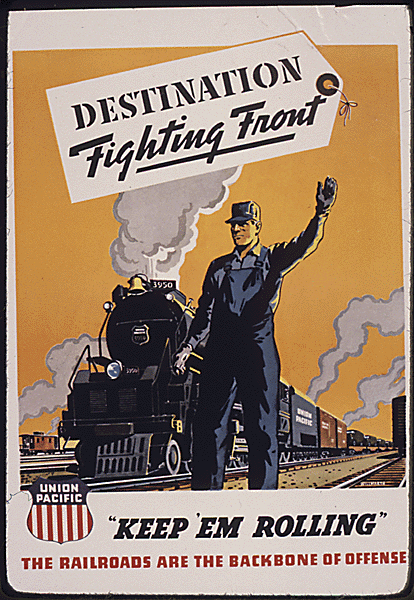
As the nation progressed, so did the role of trains. They were vital in transporting troops during wars, crucial for trade, and a lifeline for communities far from urban centers. However, with the advent of the 20th century and the rise of cars and airplanes, the prominence of train travel waned.

From the smoky beginnings in the 1800s to the streamlined trains of today, locomotives have been an integral part of America's journey, carrying not just people and goods, but dreams and hopes of a constantly evolving nation.
FURTHER READING:
Freedom Train https://prologue.blogs.archives.gov/2015/07/01/new-web-exhibit-on-the-freedom-train/
RFK Funeral Train
199 notes
·
View notes
Text

Early in the 20th century, Pullman Palace Car employed more African Americans than any other company in the United States. Most held jobs as sleeping car porters, caring for mostly white railroad passengers. Porters worked long hours with little rest, but they were well paid compared to other African Americans. In 1937, the Brotherhood of Sleeping Car Porters became the first African American union to win a labor agreement. Its members often became community leaders and civil rights activists.
90 notes
·
View notes
Photo

Autumn color on the railroad tracks. Located in downtown Pullman, Washington.
Photo by David Patterson.
66 notes
·
View notes
Photo

1939 This 'Office' Gets Your Places! Go Rail And Pullman
Source: Time Magazine
Published at: https://propadv.com/trains-ad-and-poster-collection/pullman-car-company-ad-and-poster-collection/
1 note
·
View note
Text
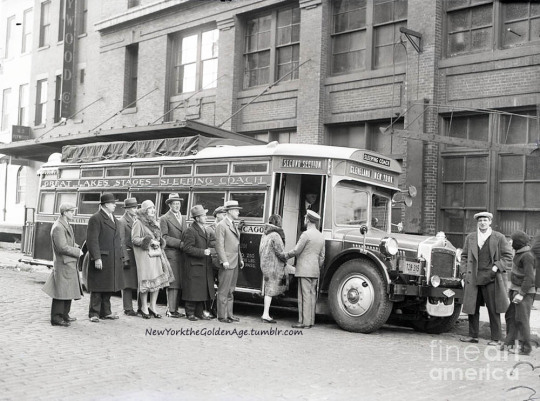
This new "motor-bus" ran between New York and Chicago, had accommodations just like a railroad Pullman car, March 11, 1929. Passengers slept in berths as the bus rolled on to the Windy City.
Photo: Bettmann Archive/Getty Images/Fine Art America
#vintage New York#1920s#sleeper bus#vintage bus#vintage long-haul bus#March 11#11 March#1920s bus#vintage NYC
60 notes
·
View notes
